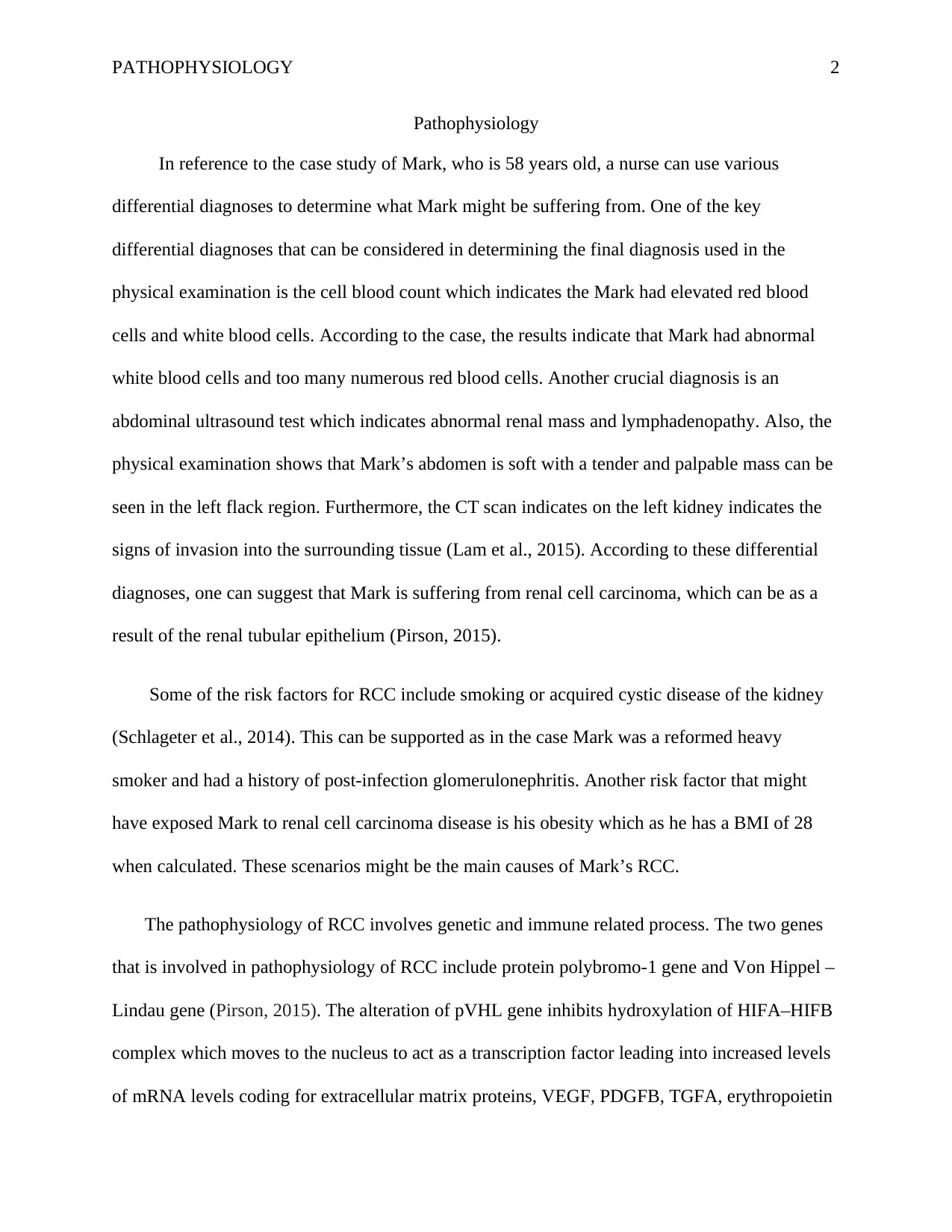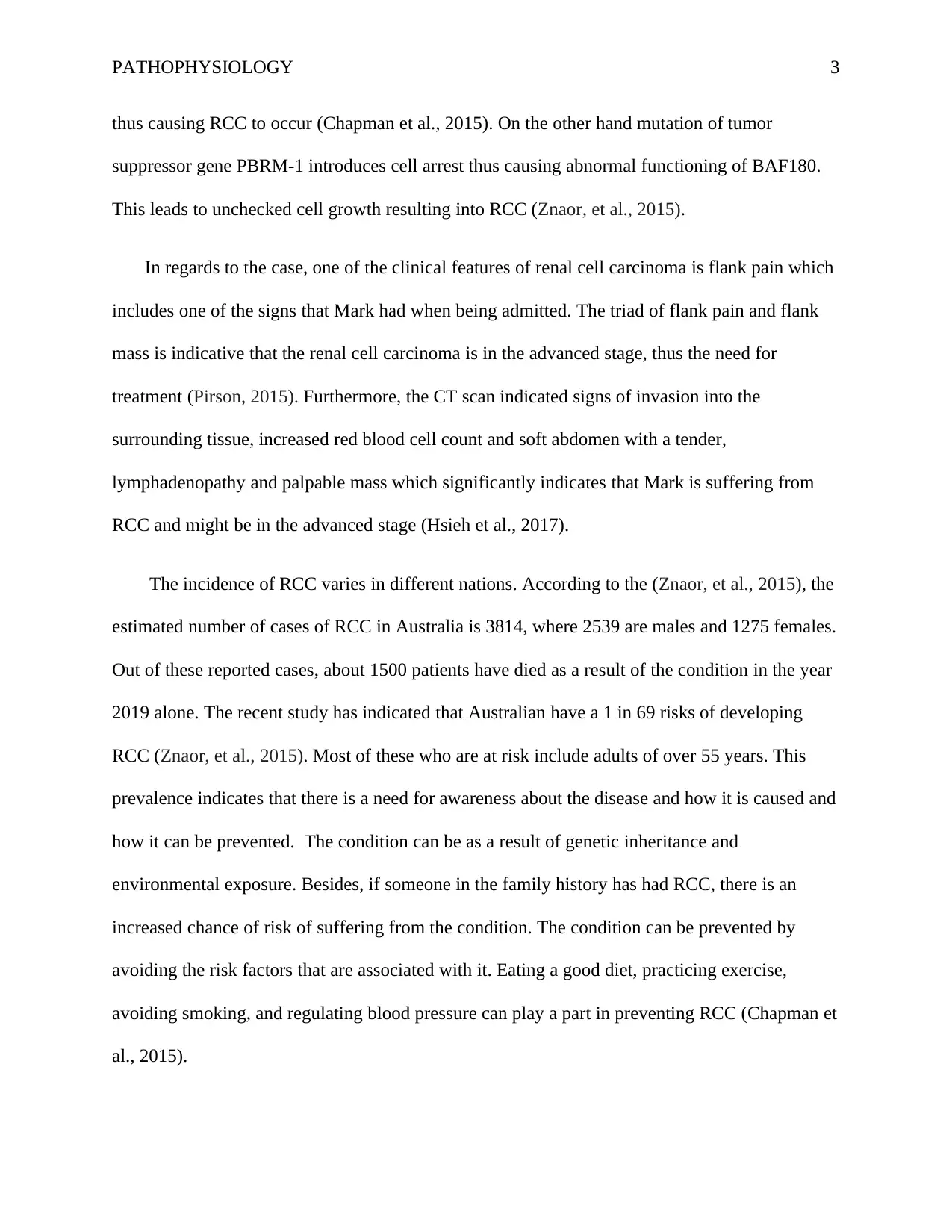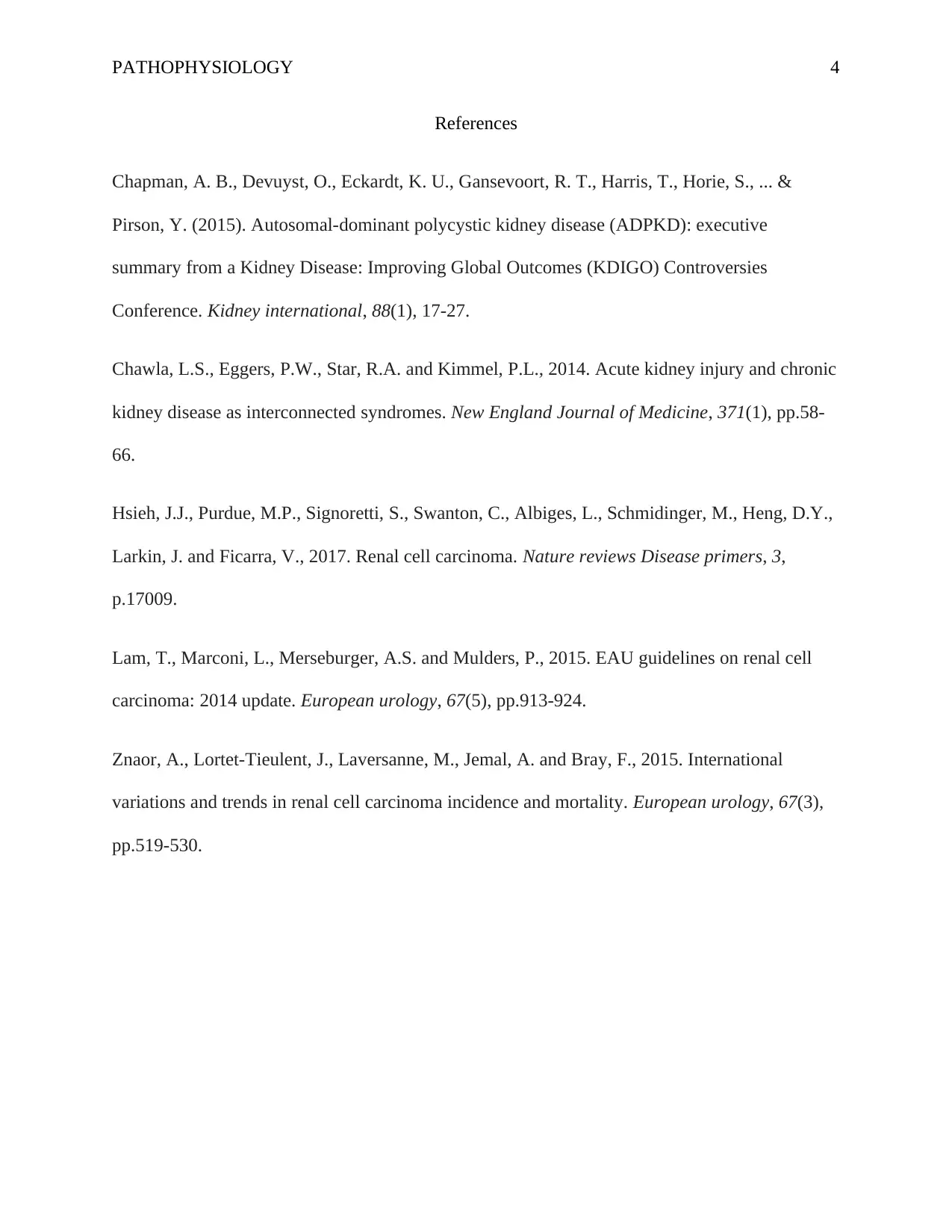Pathophysiology 2 Case Study Report: Renal Cell Carcinoma Analysis
VerifiedAdded on 2022/10/04
|4
|994
|20
Report
AI Summary
This report presents a detailed analysis of a renal cell carcinoma (RCC) case study involving a 58-year-old patient named Mark. The analysis begins with the patient's clinical presentation, including elevated red and white blood cell counts, abnormal renal mass and lymphadenopathy, a palpable mass in the left flank, and signs of tissue invasion on a CT scan. Based on these findings, the report suggests a diagnosis of RCC, emphasizing the roles of smoking, obesity, and prior infections as potential risk factors. The pathophysiology section explores the genetic and immune-related processes involved, focusing on the pVHL and PBRM-1 genes and their impact on cellular function and tumor development. The report also discusses the clinical features of RCC, such as flank pain and flank mass, and provides statistical data on RCC incidence and mortality. Finally, it highlights preventive measures, including lifestyle modifications and awareness of family history. The report concludes with a list of relevant references.
1 out of 4








![[object Object]](/_next/static/media/star-bottom.7253800d.svg)